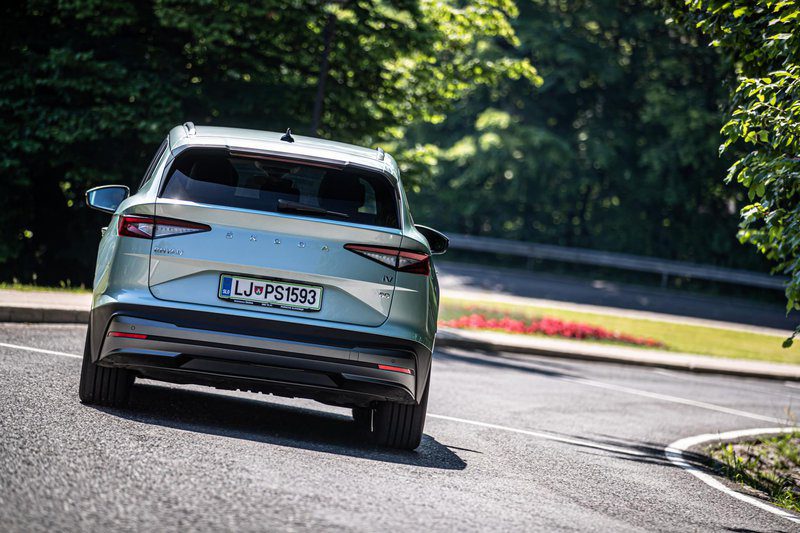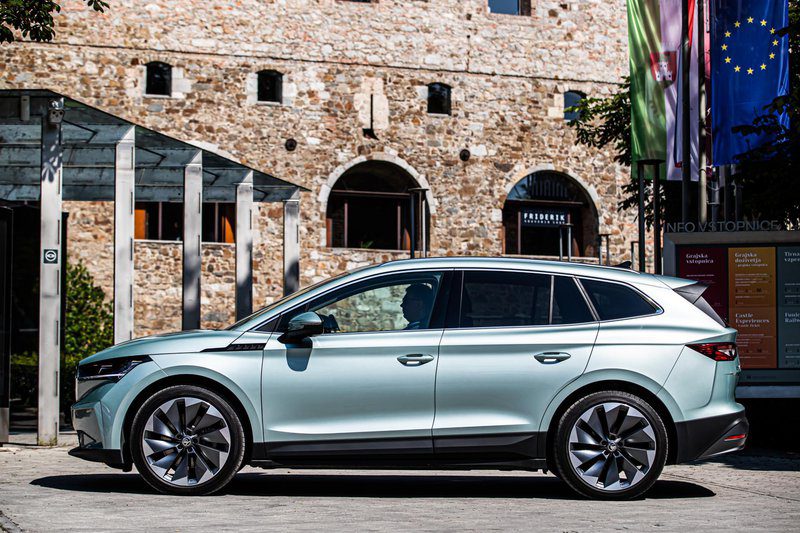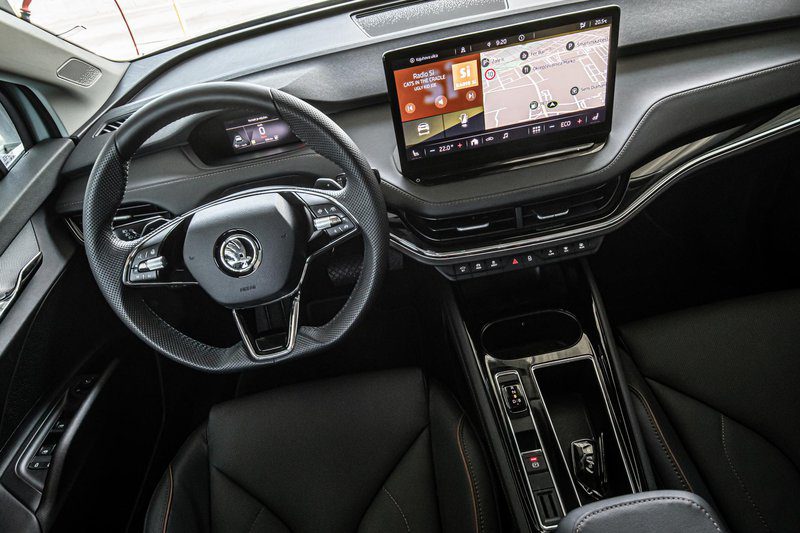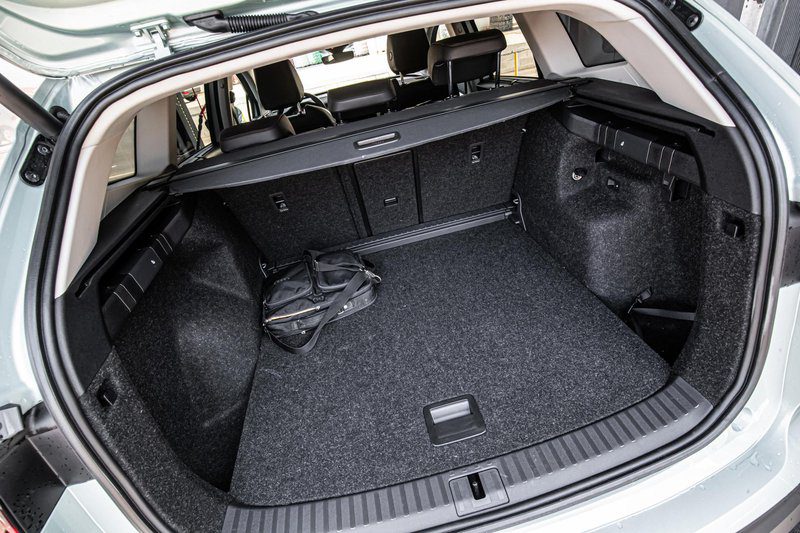
Тест: Skoda Enyaq iV 80 (2021) // Все еще сомневаетесь?
Содержание
Škoda — один из старейших автомобильных брендов, и в первые годы своего существования он считался технически очень продвинутым, поэтому я подумал, что стоит просмотреть историю, чтобы найти их первый электромобиль. Что ж, это было давно, в 1908 году, когда основатели Škoda, Вацлав Лаурин и Вацлав Клемент, представили бензиново-электрический гибридный автомобиль L&K Type E., который был создан с помощью Франтишека Крижика, проектировщика трамвайной сети в Праге.
В 1938 году за ним последовал электрический грузовик, который удобно использовать для перевозки пива, а совсем недавно — Favorit 1992 года с 15-киловаттным двигателем, который приводил машину в движение. максимальная скорость составляла 80 километров в час, а дальность полета составляла до 97 километров.
Это были времена, когда электрическая мобильность еще не была единственным направлением и целью автомобильной промышленности, особенно стратегами экологической политики, которые, вероятно, еще не осознавали, что повлечет за собой самопроизвольное вытеснение двигателей внутреннего сгорания с наших дорог. Но чтобы не зайти слишком далеко, оставим политику в пользу политики и сосредоточимся на первом современном электромобиле.

У них не было проблем с выбором названия для Škoda, поскольку все их внедорожники имеют в конце букву q, которую на этот раз они объединили со словом Enya, что означает источник жизни. Может показаться немного удивительным, что они вошли в век электромобилей с относительно большим кроссовером, а не с автомобилем меньшего размера, но не следует упускать из виду, что внедорожники составляют большую часть пирога продаж (конечно, не только в Škoda).
Вторая причина в том, что они были доступны новая корпоративная платформа, на которой также был создан Volkswagen ID.4. И когда я упоминаю Volkswagen и ID.4, я часто задаюсь вопросом, когда философия Škoda Simply Clever (просто образная, если я переведу ее) будет настолько раздражать их в руководстве концерна Wolfsurg, что они отправят сообщение Младе Болеславу: «Привет, ребята, остановите лошадок и пойдите за пивом с гуляшем».
Итак, Enyaq и ID.4 имеют одинаковую техническую основу, а также электрические силовые агрегаты и аккумуляторные модули, а содержание совершенно разное. Стилисты Škoda создали динамичный и достаточно выразительный экстерьер, который также может похвастаться очень хорошей аэродинамикой. Коэффициент сопротивления воздуха всего 0,2.5, что очень важно для достаточно тяжелых электромобилей (Enyaq весит более двух тонн). По моему скромному мнению, дизайнеры немного упустили только гигантскую решетку радиатора, которая не имеет отверстий и не выполняет никаких функций, кроме, конечно, эстетической, которую можно подчеркнуть ночным освещением, состоящим из 131 светодиода.
Комфорт почти на высшем уровне
Внутри Enyaq находится где-то между футуризмом и традициями. Панель приборов минималистична в духе современности, с небольшим пятидюймовым экраном (меньше, чем у большинства смартфонов), на котором находятся цифровые датчики и некоторые основные данные о вождении, но, несмотря на простоту, она работает очень элегантно. ойсреднее пространство занимает большой 13-дюймовый коммуникационный экран, который по размеру равен телевизору в небольшой гостиной.. Он может похвастаться очень четкой и красочной графикой и, несмотря на количество функций и настроек с относительно простыми селекторами, также с отзывчивостью, которая заметно лучше, чем в, ну, вы знаете, в каком родственнике.

Мне просто показалось немного забавным, что хорошо работающая навигация, помимо электрических зарядных станций, показывает еще и заправочные станции, где невозможно подать электричество. Я знаю, что повторяю себя, но считаю важным, чтобы оцифровка была правильной., и в то же время хвалю решение, что некоторые переключатели остались механическими. Потому что ползунки, которые есть у немецкого кузена, не убедили меня своей чрезмерной чувствительностью, а иногда и меньшей отзывчивостью.
Ощущение в салоне приятное, архитектура салона благоприятствует открытости, воздушности и простору — опять же, достаточно сравнения с небольшой, но уютной гостиной. В Škoda они неоднократно доказывали, что хорошо владеют пространственной перспективой. По общему признанию, в Enyaqu действительно много места не только для водителя и того, кто сидит рядом с ним, но и для тех, кому суждено путешествовать на заднем сиденье. Там даже тем, у кого длинные ноги, не плохо, даже места по ширине хватает и пассажира посередине гребень пола не беспокоит — ведь его там нет.
Похвалы также заслуживают передние сиденья, так как комфорт — это просто кресло, а сцепление адекватное, так что в поворотах тело не отталкивается от спинки. Сиденья обиты кожей высочайшего уровня, которая имеет экологичный вид благодаря особому способу дубления. Остальные ткани этого стиля также сделаны из смеси хлопка и переработанных бутылок. Ранее я упоминал о необычных деталях — это удобный скребок для льда на внутренней стороне двери багажного отделения., зонт в нише на обшивке передних дверей и регулируемый откидной столик на спинках передних сидений.

Все эти мелочи облегчают повседневную жизнь с Enyaq, конечно, наряду с большим (в основном больше, чем у него, ну вы знаете, какой родственник) с практичным (просто умным, как сказали бы чехи) « подвальным » пространством для зарядные кабели. При объеме 567 литров он полностью сопоставим с Octavia Combi., с разложенным задним сиденьем и объемом 1710 литров, просто гигантский. В этом отношении Enyaq полностью соответствует критериям просторного семейного автомобиля.
Вдруг и одновременно гармонично
Есть электромобили, которые ускоряются настолько агрессивно, что когда водитель резко нажимает на педаль акселератора, тела пассажиров почти ударяются о спинки сидений. С Enyaqu, который является семейным внедорожником, поступать так неприлично, хотя 310 Нм крутящего момента, доступного в полном объеме почти сразу, более чем достаточно. Благодаря немного более контролируемому и размеренному движению правой ноги этот электромобиль предлагает приятное гармоничное и непрерывное увеличение скорости.
Я часто задаюсь вопросом, что написать об электродвигателе, у которого нет звука, как в двигателях внутреннего сгорания, также нет ни характерной кривой крутящего момента, ни более-менее удачных передаточных чисел, как в механических трансмиссиях. Итак, в настоящее время самый мощный двигатель, работающий в Enyaqu, развивает максимальную мощность 150 киловатт (204 «лошадиных силы»), а автомобиль массой 2,1 тонны до скорости 100 километров в час запускается за 8,5 секунды., что для такой массы является неплохим результатом. Поэтому бояться обгонов на этой машине не стоит.
Средняя крейсерская скорость также довольно высока, а максимальная ограничена электроникой до 160 километров в час. Enyaq скоро будет доступен с более мощным двигателем, но он будет зарезервирован для полноприводной версии.

Во время теста я какое-то время не понимал, какой из трех режимов движения выбрать. Меня больше всего интересовало то, что может предложить Sport, который должен быть адаптирован для более динамичных водителей. Когда я выбрал его с помощью переключателя на центральном выступе (есть также переключатель коробки передач, который слишком мал для моих представлений), я заметил более жесткий отклик адаптивных амортизаторов в списке дополнительного оборудования, более высокую отзывчивость трансмиссии и более устойчивую и тяжелую электрическую мощность. рулевое управление.
Хотя я допускал возможность того, что не смогу полностью расслабиться с задним приводом, вскоре я обнаружил, что мне действительно нравится дизайн двигателя и задний привод, поскольку, несмотря на страстно динамичный поворот, задняя часть лишь немного указывает на склонность к дрейфу. и если это уже происходит, это обеспечивается электроникой стабилизации, которая достаточно знакома, чтобы не портить удовольствие (ну, по крайней мере, не полностью), и в то же время достаточно быстро, чтобы свести на нет преувеличения водителя. Отзывчивость и точность рулевого механизма также повышают уверенность водителя в себе, хотя ощущение на рулевом колесе немного более стерильно в обычной и комфортной программе вождения.
Амортизация, конечно, самая прочная (почти слишком большая для залатанных проселочных дорог) в спортивной программе, но никогда не бывает излишне мягкой, зато достаточно хорошо проглатывает неровности дороги, хотя на тестовой машине были 21-дюймовые колеса. . Итак, шасси ориентировано на комфорт, который, вероятно, немного больше, если колеса на дюйм или два меньше (а стороны шин выше). Кроме того, уровень шума, передаваемого от дороги через шасси в салон, очень низкий.
При езде в программе комфортного вождения заметил, что машина едет плавно и очень долго в так называемом парусном режиме с полным отсутствием регенерации при отпускании педали «акселератора». Таким образом, водителю на длинных самолетах с ногами практически нечего делать. Нет никаких существенных различий по сравнению с «нормальной» программой вождения, которая настраивается автоматически при каждом запуске, в противном случае они немного более заметны, когда селекторный переключатель находится в положении Eco.
Эта программа движения, конечно, направлена в первую очередь на энергоэффективность, хотя трехступенчатая регенерация во всех программах также может быть установлена с помощью рычагов на рулевом колесе. Даже с трансмиссией в положении B с более сильной регенерацией движение без педали тормоза практически невозможно, но автомобиль предлагает «более естественное» и более предсказуемое ощущение торможения.
Достойное потребление и охват
Число 80 на задней панели означает, что Enyaq имеет встроенную батарею в нижней части корпуса с емкостью 82 киловатт-часов или емкостью 77 киловатт-часов. Согласно заводским обещаниям, среднее потребление энергии составляет 16 киловатт-часов на 100 километров, что на бумаге означает дальность действия до 536 километров. На самом деле все не так радужно, и при обычном способе вождения Enyaq отстой около 19 киловатт-часов.
Если вы водите немного экономичнее, это число может упасть до 17 киловатт-часов, но когда я добавил участок шоссе к среднему значению нашей измерительной схемы, где на двигатель затрачивается почти 100 киловатт-часа на 23 километров, среднее значение показало 19,7. киловатт-часы. Это означает реальную дальность полета около 420 километров с ожидаемым отклонением с точки зрения подъемов и спусков, использования кондиционера, погодных условий и гравитационной нагрузки. Кстати, Enyaq относится к числу тех автомобилей, которым разрешено буксировать прицеп, его вес может достигать 1.400 килограммов.

Время зарядки — один из наиболее важных факторов для водителя электромобиля, потому что не имеет значения, пьет ли он кофе и намазывает круассан во время перебоя в подаче электроэнергии и, возможно, выполняет еще какие-то упражнения или ему требуется больше времени, что могут быть прорваны при просмотре контента на вашем смартфоне или просто объявлены потерянными.
Enyaq iV 80 имеет стандартную CCS для быстрой зарядки мощностью 50 киловатт, а также может быть модернизированным внутренним зарядным устройством. Это позволяет заряжать 125 киловатт. На такой общественной зарядной станции зарядка батареи, в которой все еще есть 10 процентов электричества, займет до 80 процентов емкости менее чем за 40 минут. На зарядных станциях мощностью 50 киловатт, которых уже довольно много в словенской сети, это время составляет чуть менее полутора часов.на домашнем навесном шкафу мощностью 11 киловатт каждые восемь часов. Конечно, есть и худший вариант — зарядка от обычной бытовой розетки, к которой весь день прибивается Enyaq с разряженным аккумулятором.
Опыт работы с электромобилями научил меня тщательно планировать маршруты и зарядку, с чем я просто согласен. Мне труднее согласиться с теми, кто говорит, что в Словении у нас достаточно или даже слишком много заправочных станций. Возможно, по количеству, по доступности и простоте использования, но никак. Но в этом не виноваты электромобили. Хотя в начале встречи с Enyaq я был немного обижен, потому что я не являюсь одним из ярых сторонников электромобильности, я быстро остыл, погрузился в другой пользовательский опыт и выбрал другой способ вождения. Чешский семейный кроссовер — одна из тех машин, способных убедить даже умеренных электроскептиков.
Škoda Enyaq IV 80 (2021 год)
Основные данные
| Продажи: | Порше Словения |
|---|---|
| Стоимость тестовой модели: | 60.268 € |
| Цена базовой модели со скидками: | 46.252 € |
| Скидка на цену тестовой модели: | 60.268 € |
| Власть: | 150кВт (204 КМ) |
| Разгон (0-100 км / ч): | 8,6 с |
| Максимальная скорость: | 160 км / ч |
| Расход ECE, смешанный цикл: | 16,0 кВтч / 100 км |
| Гарантия: | Общая гарантия 2 года без ограничения пробега, расширенная гарантия на высоковольтные батареи 8 лет или 160.000 XNUMX км. |
| Систематический обзор | 24 |
Стоимость (до 100.000 км или пять лет)
| Регулярные услуги, работы, материалы: | 480 XNUMX € |
|---|---|
| Топливо: | 2.767 XNUMX € |
| Шины (1) | 1.228 XNUMX € |
| Потеря стоимости (в течение 5 лет): | 30.726 XNUMX € |
| Обязательное страхование: | 5.495 XNUMX € |
| СТРАХОВАНИЕ КАСКО (+ B, K), AO, AO + | 8.930 XNUMX (€ |
| Рассчитать стоимость автостраховки | |
| Скупай | € 49.626 0,50 (стоимость км: XNUMX) €) |
Техническая информация
| двигатель: | электродвигатель — установлен сзади поперечно — максимальная мощность 150 кВт — максимальный крутящий момент 310 Нм. |
|---|---|
| Аккумулятор: | 77 кВтч;Время зарядки аккумулятора 11 кВт: 7:30 ч (100%); 125 кВт: 38 мин (80%). |
| Передача энергии: | двигатель приводит в движение задние колеса — 1-ступенчатая МКПП. |
| Емкость: | максимальная скорость 160 км / ч — разгон 0–100 км / ч 8,6 с — потребляемая мощность (WLTP) 16,0 кВтч / 100 км — запас хода на электротяге (WLTP) 537 км |
| Перевозка и подвески: | кроссовер — 5 дверей, 5 мест — самонесущий кузов — передняя одинарная подвеска, пружины винтовые, треугольные поперечины, стабилизатор — задний многорычажный мост, пружины винтовые, стабилизатор — тормоза передние дисковые (принудительное охлаждение), задние дисковые, АБС, электрический стояночный тормоз задних колес — реечное рулевое управление, электроусилитель руля, 3,25 оборота между крайними точками. |
| Mase: | пустой автомобиль 2.090 кг — допустимая полная масса 2.612 кг — допустимая масса прицепа с тормозом: 1.000 кг, без тормоза: 750 кг — допустимая нагрузка на крышу: 75 кг |
| Внешние размеры: | длина 4.649 мм — ширина 1.879 мм, с зеркалами 2.185 мм — высота 1.616 мм — колесная база 2.765 мм — передняя колея 1.587 — задняя 1.566 — дорожный просвет 9,3 м. |
| Внутренние размеры: | продольное переднее 880–1.110 мм, заднее 760–1.050 мм — ширина переднего 1.520 мм, заднего 1.510 мм — высота головы переднего 930–1.040 мм, заднего 970 мм — длина сиденья переднего сиденья 550 мм, заднего сиденья 485 мм — диаметр кольца рулевого колеса 370 мм — аккумулятор |
| Сундук: | 585-1.710 л |
Наши измерения
| T = 27 ° C / p = 1.063 мбар / отн. vl. = 55% / Шины: Bridgestone Turanza Eco 235/45 R 21 / Состояние одометра: 1.552 км | |
| Разгон 0-100км: | 9,0s |
|---|---|
| 402м от города: | 16,0-е годы ( 132 км / ч) |
| Максимальная скорость: | 160km / ч (D) |
| Расход электроэнергии по стандартной схеме: | 19,7 кВтч / 100 км |
| Тормозной путь при 130 км / ч: | 59,4m |
| Тормозной путь при 100 км / ч: | 35,5m |
| AM meja: | 40m |
| Trušč на 90 км / ч | 57dB |
| Trušč на 130 км / ч | 62dB |
Общий рейтинг (513/600)
Возможно, это правильный автомобиль, чтобы развеять сомнения тех, кто не видит будущего в электроприводах. По комфорту, вместительности и достойным ходовым характеристикам его также можно сравнить с бензиновым или дизельным братом Kodiaq практически по всем параметрам. И начинается битва с двоюродным братом из Вольфсбурга.
Кабина и багажник (95/110)
В Škoda у них достаточно места, чтобы сделать просторный и открытый пассажирский салон и в Enyaqu. И дюймов сзади оставалось достаточно для большого багажника.
Комфорт (99
/ 115)Почти на высшем уровне. Комфортные передние сиденья, широкие задние сиденья, регулируемая амортизация, отсутствие шума двигателя — как в домашней гостиной.
Трансмиссия (69
/ 80)Он может агрессивно ускоряться, уделяя немного больше внимания водителю и более изысканно. Достаточно убедительно даже для быстрого обгона на более высокой скорости.
Ходовые качества (82
/ 100)Он умеет повеселиться в поворотах, если в салоне есть пассажиры, предпочитает более умеренную езду.
Безопасность (105/115)
Фактически, этот контент включает в себя все системы, которые обеспечивают безопасность вождения, помогают водителю на работе и прощают его ошибки.
Экономика и окружающая среда (63
/ 80)Расход вполне разумный по габаритам и весу, а реальный диапазон довольно большой, хотя до заводских цифр он не дотягивает.
Удовольствие от вождения: 4/5
Как семейный кроссовер Enyaq предназначен в первую очередь для повседневных поездок, а также для длительных путешествий, где он оказывается в первую очередь комфортным. Я не буду говорить, что не хватает удовольствия от вождения за рулем, которое не настолько выражено, чтобы поднять уровень адреналина в крови до уровня изобилия. Но, возможно, пришло время расслабиться, управляя автомобилем другим способом, соответствующим возрасту электромобиля.
Мы хвалим и упрекаем
свежесть дизайна и узнаваемость
простор и воздушность пассажирского салона
большой и легко расширяемый багажник
энергичное ускорение
потребление электроэнергии на скорости шоссе
адаптивные амортизаторы не входят в стандартную комплектацию
навигация с устаревшими данными
